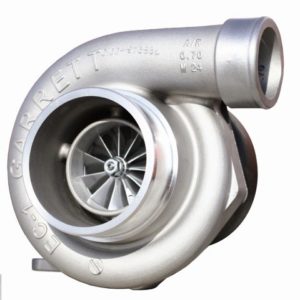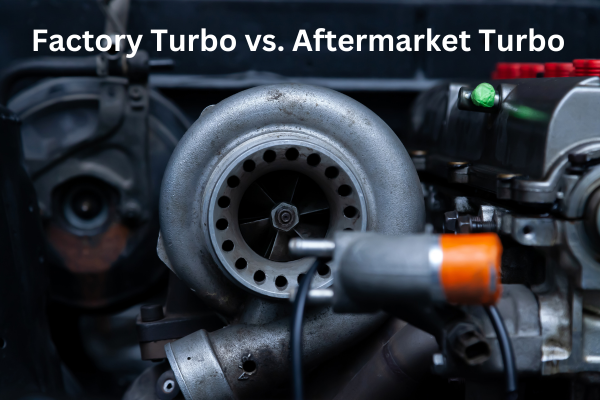What is a turbocharger?
Have you ever watched cars buzzing past you with sooty fumes streaming from their tailpipe? It’s obvious exhaust fumes cause air pollution, but it’s much less apparent that they’re wasting energy at the same time. The exhaust is a mixture of hot gases pumping out at speed and all the energy it contains—the heat and the motion (kinetic energy)—is disappearing uselessly into the atmosphere. Wouldn’t it be neat if the engine could harness that waste power somehow to make the car go faster? That’s exactly what a turbocharger does.

Car engines make power by burning fuel in sturdy metal cans called cylinders. Air enters each cylinder, mixes with fuel, and burns to make a small explosion that drives a piston out, turning the shafts and gears that spin the car’s wheels. When the piston pushes back in, it pumps the waste air and fuel mixture out of the cylinder as exhaust. The amount of power a car can produce is directly related to how fast it burns fuel. The more cylinders you have and the bigger they are, the more fuel the car can burn each second and(theoretically at least) the faster it can go.
How does a turbocharger work?
If you know how a jet engine works, you’re halfway to understanding a car’s turbocharger. A jet engine sucks in cold air at the front, squeezes it into a chamber where it burns with fuel, and then blasts hot air out of the back. As the hot air leaves, it roars past a turbine (a bit like a very compact metal windmill) that drives the compressor (air pump) at the front of the engine. This is the bit that pushes the air into the engine to make the fuel burn properly. The turbocharger on a car applies a very similar principle to a piston engine. It uses the exhaust gas to drive a turbine. This spins an air compressor that pushes extra air (and oxygen) into the cylinders, allowing them to burn more fuel each second. That’s why a turbocharged car can produce more power (which is another way of saying “more energy per second”). A supercharger (or “mechanically driven supercharger” to give it its full name) is very similar to a turbocharger, but instead, of being driven by exhaust gases using a turbine, it’s powered from the cars spinning crankshaft. That’s usually a disadvantage: where a turbocharger is powered by waste energy in the exhaust, a supercharger actually steals energy from the car’s own power source (the crankshaft), which is generally unhelpful.
Advantages and disadvantages of turbochargers
You can use turbochargers with either gasoline or diesel engines and on more or less any kind of vehicle (car, truck, ship, or bus). The basic advantage of using a turbocharger is that you get more power output for the same size of engine (every single stroke of the piston, in every single cylinder, generates more power than it would otherwise do). However, more power means more energy output per second, and the law of conservation of energy tells us that means you have to put more energy in as well, so you must burn correspondingly more fuel. In theory, that means an engine with a turbocharger is no more fuel efficient than one without. However, in practice, an engine fitted with a turbocharger is much smaller and lighter than an engine producing the same power without a turbocharger, so a turbocharger car can give better fuel economy in that respect. Manufacturers can often now get away with fitting a much smaller engine to the same car (such as a turbocharged V6 instead of a V8, or a turbocharged four-cylinder engine instead of a V6). And that’s where turbocharged cars get their advantage: working well, they might save up to 10 percent of your fuel. Since they burn fuel with more oxygen, they tend to burn it more thoroughly and cleanly, producing less air pollution.






